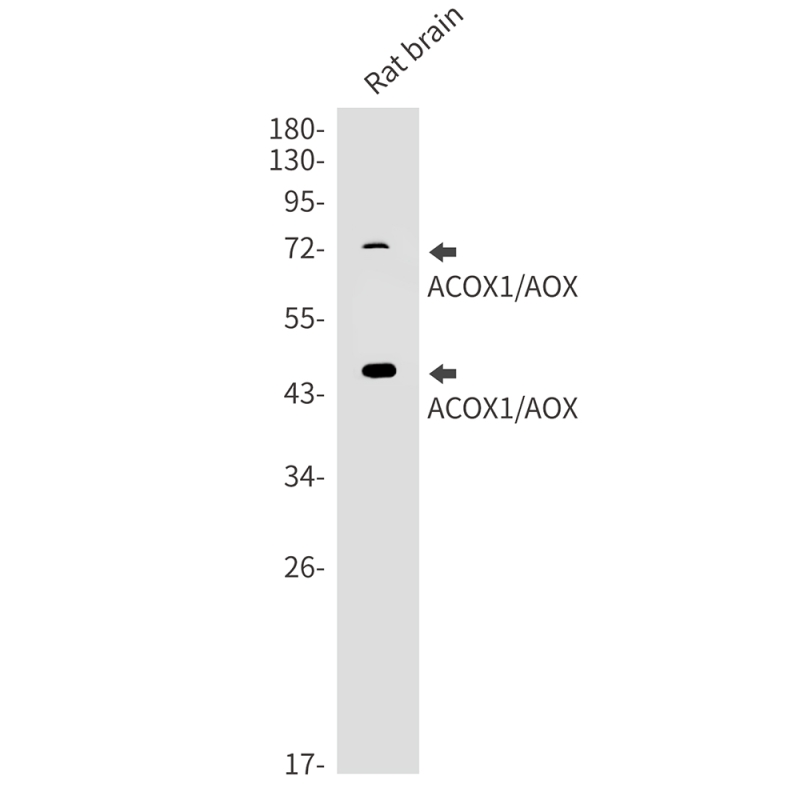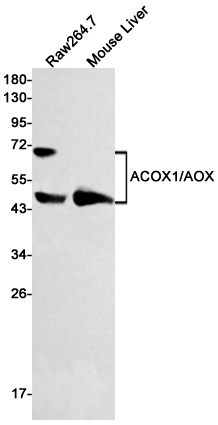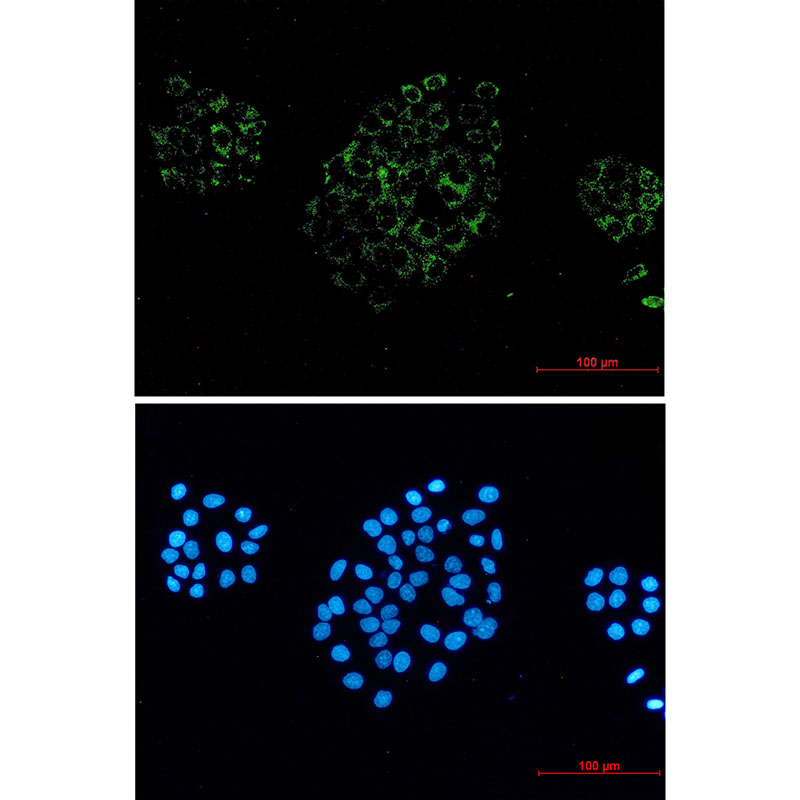


| WB | 1/500 - 1/2000 | Human,Mouse,Rat |
| IF | 咨询技术 | Human,Mouse,Rat |
| IHC | 咨询技术 | Human,Mouse,Rat |
| ICC | 技术咨询 | Human,Mouse,Rat |
| FCM | 咨询技术 | Human,Mouse,Rat |
| Elisa | 1/10000 | Human,Mouse,Rat |
| Aliases | AOX; Acox; Paox; D130055E20Rik |
| Entrez GeneID | 11430 |
| WB Predicted band size | Calculated MW: 75 kDa; Observed MW: 74,48 kDa |
| Host/Isotype | Rabbit IgG |
| Antibody Type | Primary antibody |
| Storage | Store at 4°C short term. Aliquot and store at -20°C long term. Avoid freeze/thaw cycles. |
| Species Reactivity | Human,Mouse,Rat |
| Immunogen | Recombinant protein of mouse ACOX1 |
| Formulation | Purified antibody in TBS with 0.05% sodium azide,0.05%BSA and 50% glycerol. |
+ +
以下是关于ETV5抗体的3篇参考文献及其摘要内容:
1. **文献名称**: "ETV5-mediated regulation of tumor cell invasion and metastasis in colorectal cancer"
**作者**: Gang Xie et al.
**摘要**: 该研究利用ETV5抗体通过免疫组化分析结直肠癌组织,发现ETV5高表达与肿瘤侵袭和转移相关。实验表明ETV5通过调控基质金属蛋白酶(MMPs)促进癌细胞迁移,抗体特异性验证支持其在临床预后的潜在应用。
2. **文献名称**: "ETS transcription factor ETV5 regulates placental development through trophoblast-specific gene expression"
**作者**: Emily S. Wong et al.
**摘要**: 研究使用ETV5抗体在小鼠胎盘组织中进行免疫荧光染色,发现ETV5通过调控滋养层细胞分化和血管生成相关基因(如VEGF)参与胎盘发育,抗体特异性验证为功能研究提供了关键工具。
3. **文献名称**: "Hypoxia-inducible ETV5 promotes resistance to anti-angiogenic therapy via HIF-1α interaction"
**作者**: Hiroshi Harada et al.
**摘要**: 该研究通过ETV5抗体进行染色质免疫沉淀(ChIP)和Western blot分析,揭示ETV5在缺氧条件下与HIF-1α协同激活促血管生成基因,导致抗血管生成疗法的耐药性,抗体验证支持其分子机制解析。
4. **文献名称**: "Developmental role of ETV5 in mouse intestinal stem cell niche formation"
**作者**: Patrick G. Guin et al.
**摘要**: 研究利用ETV5抗体在小鼠胚胎肠道组织中检测ETV5表达模式,发现其通过调控Wnt/β-catenin通路影响肠道干细胞生态位的形成,抗体特异性实验证实其在发育中的时空表达特征。
以上文献均涉及ETV5抗体在实验中的应用(如免疫染色、Western blot等),并聚焦于ETV5在肿瘤、发育及耐药性中的功能机制。
The ETV5 antibody is a tool used to detect and study the ETS variant transcription factor 5 (ETV5), a member of the ETS family of DNA-binding proteins. ETV5. also known as ERM, plays critical roles in regulating gene expression by binding to purine-rich DNA sequences. It is involved in developmental processes, cellular differentiation, and tissue homeostasis, particularly in the reproductive, nervous, and vascular systems. Dysregulation of ETV5 has been linked to pathological conditions, including cancer progression, metastasis, and endocrine disorders, making it a focus in oncology and biomedical research.
ETV5 antibodies are typically produced in immunized hosts (e.g., rabbits, mice) using recombinant ETV5 proteins or synthetic peptides as immunogens. These antibodies enable researchers to investigate ETV5 expression, localization, and function through techniques like Western blotting, immunohistochemistry (IHC), immunofluorescence (IF), and chromatin immunoprecipitation (ChIP). Validation of specificity is crucial, often achieved via knockout controls or siRNA-mediated knockdown. Commercially available ETV5 antibodies vary in clonality (monoclonal/polyclonal), host species, and applications, requiring careful selection based on experimental needs. Their utility spans basic research to clinical studies, aiding in understanding ETV5’s role in disease mechanisms and potential therapeutic targeting.
×